Description
A stirrup jar is a style of a pottery vessel, which flourished during the Late Bronze Age after a probable origin at the end of the Middle Bronze Age, probably on Crete. to accomplish more efficient, less wasteful pouring of expensive fluids, to take the place of various amphorae used for the purposes. From there it passed to the Cyclades.
The mainland Greeks were slow to adopt it, but when they did so as a standard type In the Cyclades and under Aegean Crete, no standard type was used, but the features varied a great deal.
Its range was the Eastern Mediterranean region, comprising mainland Greece, the Cyclades, Crete, Cyprus, Rhodes, and export regions on the coasts of Western Asia and Africa, especially Ancient Egypt. In short, the type is primarily associated with and is a diagnostic of Mycenaean Greece. It is known from the entire Mycenaean Period from Early Mycenaean (Late Helladic and Cycladic I and II) through all phases of the Late Mycenaean (Late Helladic, Cycladic, and Minoan III).
The word, “stirrup-jar,” is a translation of German Bügelkanne, which is what Schliemann called the first known instances just after he had uncovered them from the Troy VI layer at Troy (destroyed 1250 BC). The handles look like stirrups. The neck between the stirrups is a false one, leading to the synonym “false-necked jar.” The real spout projects from the upper flank. There is a mechanical advantage to holding the stirrups and tilting the jar up from the bottom to pour from the side, overturning the flasks with similar stirrups but a real neck nearly upside down to pour.






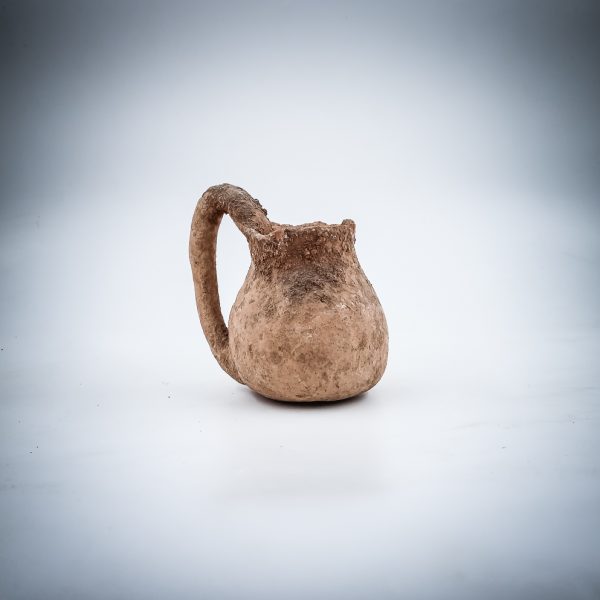
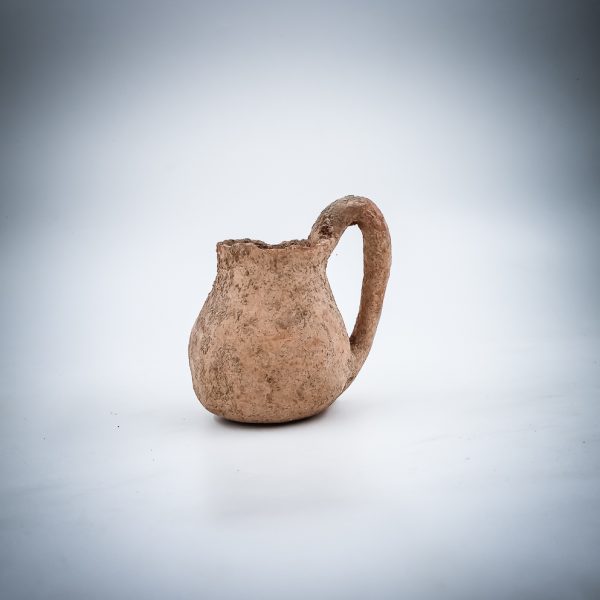
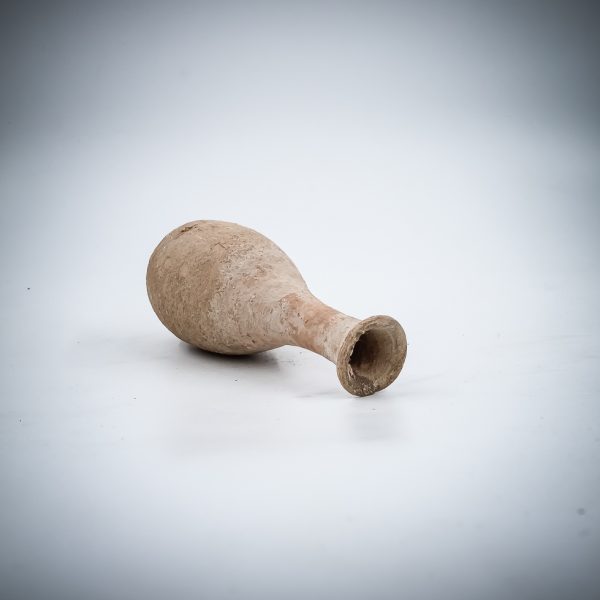
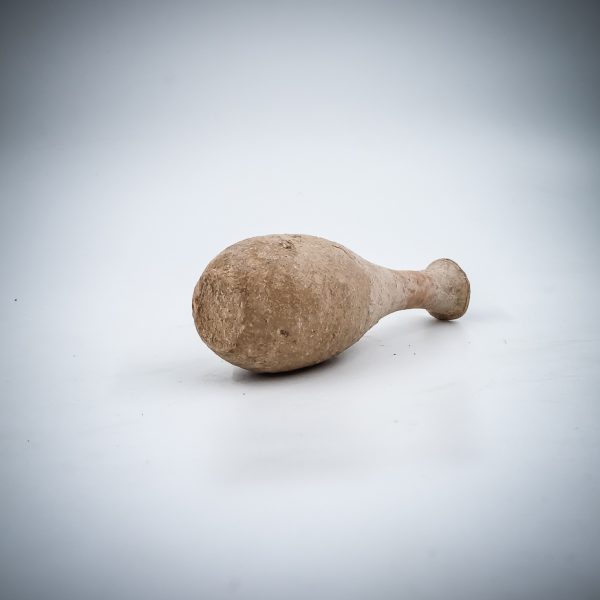
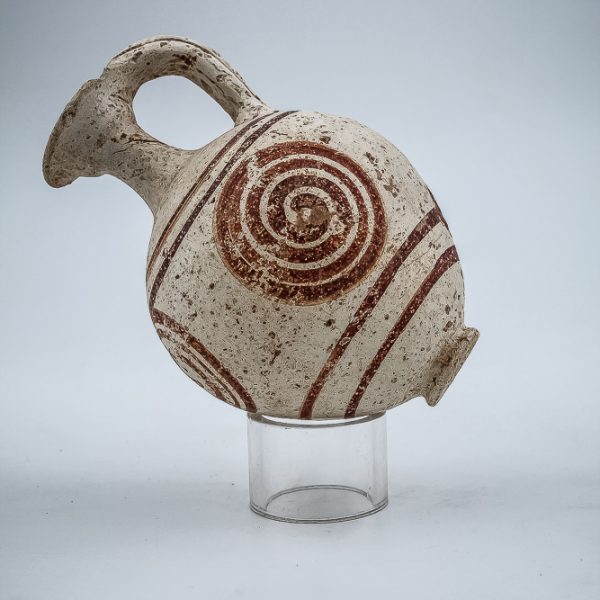
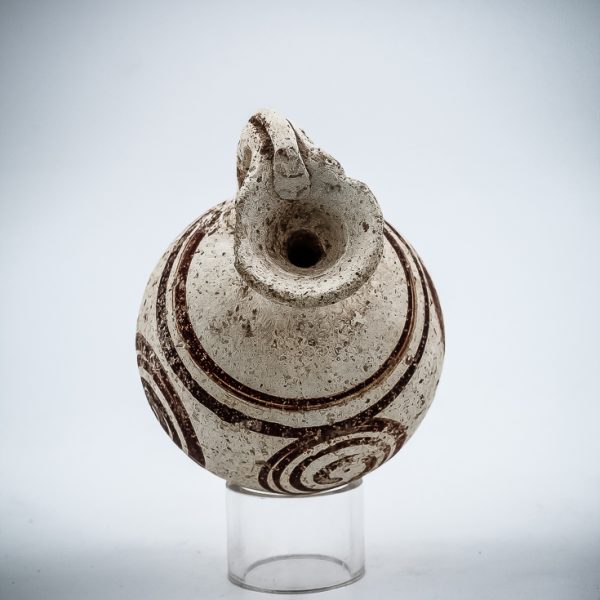
Reviews
There are no reviews yet.